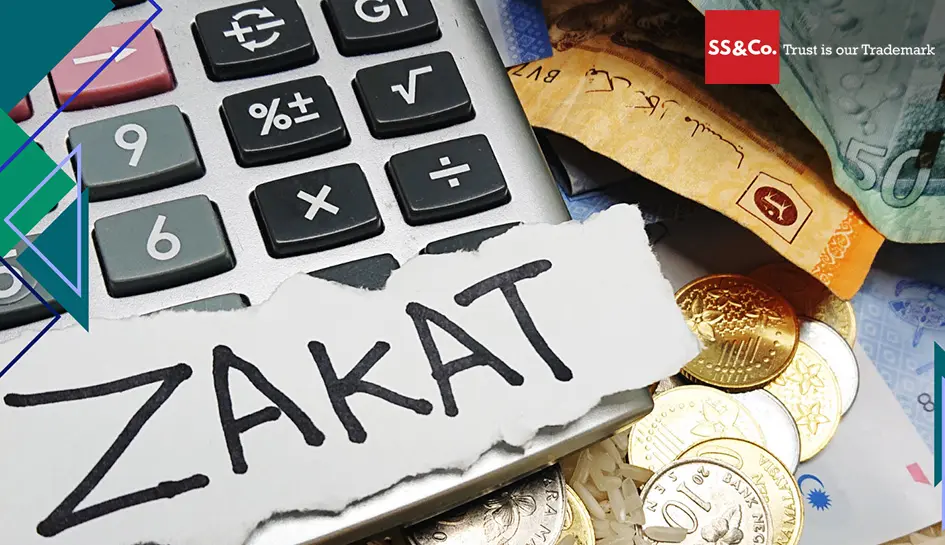Now Reading: 10 Strategic Zakat Compliance Tips for Real Estate Investors in 2025
-
01
10 Strategic Zakat Compliance Tips for Real Estate Investors in 2025
10 Strategic Zakat Compliance Tips for Real Estate Investors in 2025

Table of Contents
Zakat Compliance: Saudi Arabia’s real estate market, valued at SAR 1.1 trillion ($293 billion) with 200,000 transactions in 2024, is projected to reach USD 471 billion by 2030, growing at a 7.89% CAGR, per Saudi Residential Real Estate Market Overview.
The Zakat, Tax and Customs Authority (ZATCA) enforces zakat compliance under the Zakat Collection Implementing Regulations, updated in 2025 per Ministerial Resolution No. 1248, dated 11/10/1446 AH, ensuring alignment with Vision 2030.
These tips reduce compliance costs by 0.5–1.5% while supporting 6–8% yields. This article outlines ten strategic zakat compliance tips for real estate investors in Saudi Arabia in 2025, with U.S. tax considerations, without external links.
Why Zakat Compliance Matters?

Saudi Arabia’s 4.5% GDP growth forecast, 7.6 million population, and 20% FDI growth to SAR 15 billion ($4 billion) in 2024 drive real estate demand, per Ministry of Investment. Zakat compliance at 2.5% (Hijri) or 2.57% (Gregorian) ensures 98% adherence, avoiding fines up to SAR 500,000. Key impacts:
- Cost Savings: 0.5–1% reduction in penalties.
- Compliance Efficiency: Aligns with Wafi escrow platforms.
- Yield Stability: 85–90% occupancy in Riyadh’s SEDRA.
- FDI Appeal: 15% growth in investor confidence.
10 Strategic Zakat Compliance Tips for Real Estate Investors in 2025

1. Register Off-Plan Projects via Wafi in Riyadh
Article 73 allows deductions for off-plan balances licensed by REGA, per ZATCA. Registering a SAR 50 million Riyadh project via Wafi deducts SAR 40 million (with SAR 10 million additions), saving SAR 1 million (2.5% zakat).
- Impact: Reduces zakat base by 0.5–1%; supports 6–7% yields.
- U.S. Consideration: Income on Schedule E; assets on Form 8938.
- Action: Use Wafi portal; verify with ZATCA.
2. Prioritize Non-Current Assets in Jeddah
Classify assets to prioritize non-current deductions, per ZATCA. A SAR 30 million Jeddah plot with SAR 20 million non-current assets saves SAR 500,000 (0.5–1%) in zakat by applying deductions first to non-current.
- Impact: Optimizes tax base; stabilizes 7–8% yields.
- U.S. Consideration: Expenses on Schedule E; depreciation on Form 4562.
- Action: Classify via ROSHN; file with ZATCA.
3. Align Funding Sources in Dammam
Ensure funding complies with Article 25, adding current liabilities to the zakat base, per ZATCA. A SAR 25 million Dammam project with SAR 5 million escrow funding avoids SAR 125,000 (0.5%) in penalties.
- Impact: Enhances transparency by 5%; supports 6–8% yields.
- U.S. Consideration: Report on Form 1040; accounts on FinCEN Form 114.
- Action: Use Ejar platform; consult KPMG.
4. Automate Zakat Calculations for NEOM
Use digital tools to align zakat with financial statement balances, per Ministerial Resolution No. 1007. A SAR 100 million NEOM project saves SAR 250,000 (0.3–0.5%) in compliance costs via automation.
- Impact: Cuts audit time by 3–5 days; boosts 6–7% yields.
- U.S. Consideration: Income on Schedule E; credits on Form 1116.
- Action: Integrate with Tadawul; consult PwC.
5. Apply Retroactive Rules for Diriyah Gate
Apply 2025 rules to pre-2024 fiscal years by April 30, 2025, per Ministerial Resolution No. 947. A SAR 40 million Diriyah Gate project saves SAR 200,000 (0.5%) by adjusting 2023 zakat.
- Impact: Increases cash flow by 0.5–1%; aligns with 85% occupancy.
- U.S. Consideration: Losses on Schedule E; report on Form 8938.
- Action: File via Istitlaa; target PIF-backed projects.
6. Exempt Land Reserves in Makkah
Register land reserves for public projects with MoMRAH to secure zakat exemptions, per ZATCA. A SAR 20 million Makkah plot saves SAR 500,000 (2.5% zakat), reducing costs by 0.5–1%.
- Impact: Lowers holding costs; supports 7–8% yields.
- U.S. Consideration: Expenses on Schedule E; assets on Form 8938.
- Action: Register via MoMRAH; consult Deloitte.
7. Simplify SME Reporting in Al Khobar
SMEs with revenues below SAR 40 million use simplified zakat reporting, per ZATCA. A SAR 10 million Al Khobar project saves SAR 50,000 (0.5%) in compliance costs via digital filing.
- Impact: Enhances cash flow; supports 6–8% yields.
- U.S. Consideration: Income on Schedule E; report on Form 1040.
- Action: File via ZATCA portal; align with MoCI.
8. Maintain Accurate Records for Qiddiya
Keep detailed records of zakatable assets to avoid overpayment, per ZATCA. A SAR 60 million Qiddiya project with accurate records saves SAR 150,000 (0.3–0.5%) in miscalculated zakat.
- Impact: Reduces errors by 5%; supports 6–7% yields.
- U.S. Consideration: Expenses on Schedule E; accounts on FinCEN Form 114.
- Action: Use ERP systems; consult Knight Frank.
9. Leverage Escrow Accounts for Jazan
Use Wafi escrow accounts for off-plan sales to segregate non-zakatable funds, per ZATCA. A SAR 15 million Jazan project saves SAR 75,000 (0.5%) in zakat by isolating escrow balances.
- Impact: Enhances compliance; supports 6–8% yields.
- U.S. Consideration: Income on Schedule E; report on Form 8938.
- Action: Set up via Wafi; verify with REGA.
10. Engage Zakat Advisors for Masar
Hire advisors to navigate zakat complexities for Masar projects, per ZATCA. A SAR 70 million Makkah development saves SAR 350,000 (0.5%) in penalties through expert guidance.
- Impact: Cuts compliance costs by 0.3–0.5%; boosts 7–8% yields.
- U.S. Consideration: Expenses on Schedule E; credits on Form 1116.
- Action: Consult PwC; align with MoMRAH.
Key Considerations for U.S. Investors
- Risks:
- Oversupply: 80,000 units in 2025 may soften yields by 0.5–1%, per CBRE.
- Volatility: 5–8% price fluctuations possible, per Knight Frank.
- Compliance Costs: Advisory fees add 0.3–0.5%, offset by savings.
- Tax Compliance: Saudi’s 2.5% zakat (Hijri) or 2.57% (Gregorian), 5% RETT, and 15% VAT apply. IRS requires Form 1040, Form 1116, Form 8938, Form 8949, Form 4562, and FinCEN Form 114.
- Regulatory Compliance: REGA mandates Wafi registration; fines up to SAR 500,000. Verify via MoCI.
- Currency Stability: SAR pegged at 1 USD = 3.75 minimizes risk.
Conclusion
The 2025 zakat compliance strategies—registering off-plan projects, prioritizing non-current assets, aligning funding, automating calculations, applying retroactive rules, exempting land reserves, simplifying SME reporting, maintaining records, leveraging escrow accounts, and engaging advisors—optimize a $293 billion Saudi real estate market with 6–8% yields.
U.S. investors, leveraging IRS credits and tools from ZATCA, Wafi, or Istitlaa, can ensure compliance and maximize returns in Riyadh, Jeddah, and Makkah, driving profitability in Vision 2030’s dynamic landscape. zakat compliance
read more: 8 Smart Ways RETT Changes Will Influence Investments in 2025





















